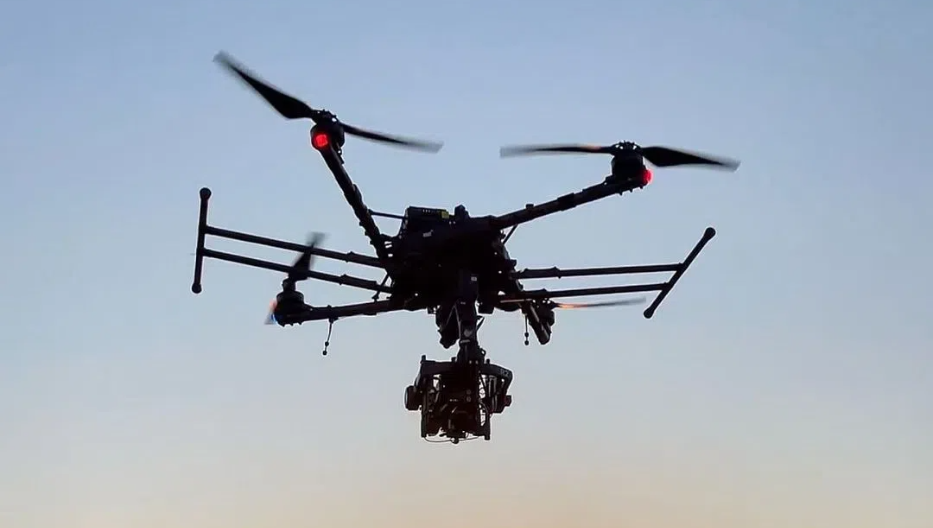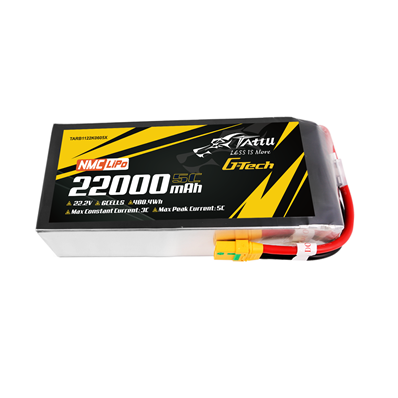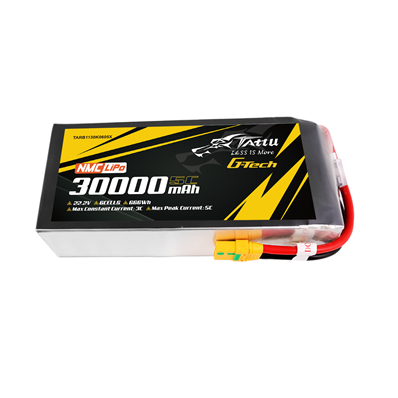What is a Drone ESC and Is it Important?
Electronic Speed Controllers (ESCs) are vital components in drone technology, enabling precise control of motor speed and direction. Without an ESC, a drone’s motors would not be able to function optimally, affecting overall performance. In this article, we’ll explore the role of an ESC, its components, types, and how it influences drone performance.
What is a drone ESC, and what role does it play in drone operation?
A drone ESC is a specialized device that regulates the speed and rotation of a drone motor by managing the electrical current delivered to it. Acting as a communication bridge between the flight controller and the motor, the ESC interprets commands from the flight controller and adjusts motor speed accordingly. It plays a critical role in determining how fast a motor spins, which directly impacts the drone’s movement, stability, and responsiveness. By adjusting the motor speed, the ESC helps control the drone’s altitude, direction, and attitude, enabling precise flight control.

What are the different types of ESCs used in drones, and how do they vary?
There are primarily two types of ESCs based on motor technology. They are brushed and brushless ESCs. The main variation between ESC types lies in the motor compatibility—brushed motors require simpler ESCs, while brushless motors require ESCs capable of handling three-phase current and providing more sophisticated control signals.
●Brushed ESCs: Typically found in older or smaller drones, these ESCs control brushed motors, which have carbon brushes and commutators. They control brushed DC motors, which have physical brushes that wear over time.
●Brushless ESCs: These ESCs are used with brushless motors, which are more common in modern drones. More common and efficient, these control brushless DC motors, which are more powerful and durable. They use electronic commutation to switch the motor's phases, eliminating the need for physical brushes.
What are the main components of an ESC, and how do they work together to control motor speed and direction?
A typical ESC consists of the following key components:
●Microcontroller (MCU): The brain of the ESC, the microcontroller processes input from the flight controller and adjusts the power output to the motors. It communicates with other components and regulates motor speed.
●Power MOSFETs (Metal-Oxide-Semiconductor Field-Effect Transistors): These transistors control the flow of electrical power to the motor. When turned on, they allow power to flow through the motor windings, and when turned off, they stop the current.
●Capacitors: These components help smooth out voltage fluctuations and prevent electrical noise that could interfere with the drone’s performance.
●Inductors: Inductors work to reduce power ripple and improve the efficiency of power delivery.
●Driver ICs: These circuits amplify the microcontroller's signals to drive the MOSFETs efficiently.
●Battery Elimination Circuit (BEC): Converts high voltage from the battery to a lower voltage suitable for powering other electronics in the drone.
Together, these components regulate the speed, direction, and timing of motor power to ensure smooth operation.
What are ESC ratings (e.g., current, voltage), and why are they important for compatibility?
It is crucial to match the ESC’s ratings with the battery and motor specifications to ensure proper functioning and to avoid overloading components. ESC ratings typically include:
●Current Rating: Indicates the maximum continuous current the ESC can handle. If the current exceeds this rating, the ESC may overheat, leading to failure. It should match or exceed the motor's maximum current draw. Choosing an ESC with a current rating higher than the expected load ensures longevity and performance.
●Voltage Rating: Refers to the maximum voltage the ESC can tolerate.It should be equal to or higher than the battery's voltage. It must be compatible with the drone's battery voltage to prevent damage.
How can an ESC be programmed or configured, and what tools are needed?
Configuration is crucial for optimizing a drone’s flight characteristics and ensuring the ESC performs to its maximum potential. Programming an ESC involves setting parameters such as throttle range, braking settings, and timing. This can be accomplished using:
●Dedicated Software: Many modern ESCs can be programmed via software tools like BLHeliSuite or KISS ESC Configurator, which connect to the ESC through a USB link or dedicated programming tool. This allows for customization of parameters like timing, PWM frequency, and motor direction.
●ESC Programming Cards: These are physical devices that allow you to configure settings like motor timing, brake settings, and throttle range directly on the ESC without a computer.
●Firmware Updates: Firmware can be updated to improve performance, fix bugs, or add new features. This is commonly done through software or a programming card.
How does an ESC communicate with the flight controller, and what protocols are commonly used?
ESCs communicate with the flight controller using serial protocols like PWM, OneShot, or DShot. These protocols allow the flight controller to make real-time adjustments to motor speed based on inputs from sensors like gyros and accelerometers.
●PWM (Pulse Width Modulation): One of the most common protocols, where the flight controller sends a signal to the ESC indicating the desired motor speed and varying pulse lengths correspond to different throttle levels.
●OneShot / MultiShot: Enhanced versions of PWM that provide faster response times, making them ideal for high-performance drones.
●DShot (Digital Shot): A more advanced protocol that allows for faster, more reliable communication between the flight controller and ESC. DShot is a digital signal, meaning it's less prone to noise and interference compared to PWM.
How do brushless motors interact with ESCs?
Brushless motors (BLDC motors) require three-phase current to function. An ESC takes the DC voltage from the battery and converts it into the three-phase AC current needed by the motor. It then uses algorithms to precisely control the timing of the electrical pulses sent to the motor, dictating its speed and rotation direction. The ESC coordinates this process to ensure smooth and efficient motor operation, which directly affects the drone’s stability and flight control.
How does an ESC impact a drone's performance, such as flight stability, efficiency, and responsiveness?
An ESC plays a crucial role in several aspects of drone performance:
●Flight Stability: A well-tuned ESC helps maintain stable flight by responding quickly to commands from the flight controller.
●Efficiency: ESCs with high efficiency reduce energy consumption, increasing flight time by ensuring that the motors only draw the power they need.
●Responsiveness: High-quality ESCs offer quick and precise motor control, improving a drone’s agility and responsiveness during maneuvers.

What features and technologies differentiate modern ESCs (e.g., DShot, BLHeli firmware)?
Modern ESCs are equipped with advanced features that differentiate them from older models. These innovations contribute to better overall performance in various drone applications, from racing to aerial photography.
●DShot Protocol: Offers faster communication between the ESC and flight controller, with greater reliability and no signal interference compared to older protocols like PWM.
●BLHeli Firmware: A popular firmware for ESCs, providing better motor control, smoother flight, and increased performance. It also allows users to customize settings such as motor timing and braking modes.
●Active Braking: Some ESCs include active braking capabilities, which allow for quicker deceleration of the motors, enhancing flight control during rapid descents.
●Telemetry: Some ESCs support telemetry data, providing feedback to the pilot about motor temperature, current draw, and other parameters to prevent overloading and improve flight safety.
●High Current Handling: Modern ESCs can handle high current demands, enabling powerful motor setups.
●Low-Noise Operation: Reduced electronic noise improves signal integrity and flight stability.
Conclusion
The ESC is a critical component in any drone, ensuring that motors receive the correct power to maintain optimal flight performance. Understanding how ESCs work, their ratings, and the technologies that power modern ESCs can help drone builders and pilots make informed choices about the best components for their systems. As a global leading lipo battery manufacturer, Grepow offers a wide range of UAV battery and FPV battery, from 1S (3.7V) to 18S (68.4V) with capacities up to 84AH. Whether you're flying a small FPV drone or a larger commercial UAV, Grepow has a battery solution tailored to your specific needs and compatible with a variety of ESCs. If you have any questions or needs, please feel free to contact us at info@grepow.com.
Related Articles:
An In-Depth Guide to Drone Motors
Understanding Drone Payload: A Comprehensive Guide
How to Choose the Right Drone Propeller?
What Is A Drone Flight Controller?
How To Choose The Right Motors And Propeller For Different Drone Applications?
Related Articles
-

The Evolution and Challenges of Low-Altitude Economy
2025-07-01 -

Drone Batteries: A Comprehensive Guide
2025-06-23 -

What is an 8S LiPo Battery?
2025-06-20
Related products
-

22000mAh 22.2V 6S Semi-Solid State Battery Pack with G-Tech
-

30000mAh 22.2V 6S Semi-Solid State Battery Pack with G-Tech
-

17000mAh 22.2V 6S Semi-Solid State Battery Pack with G-Tech
















































